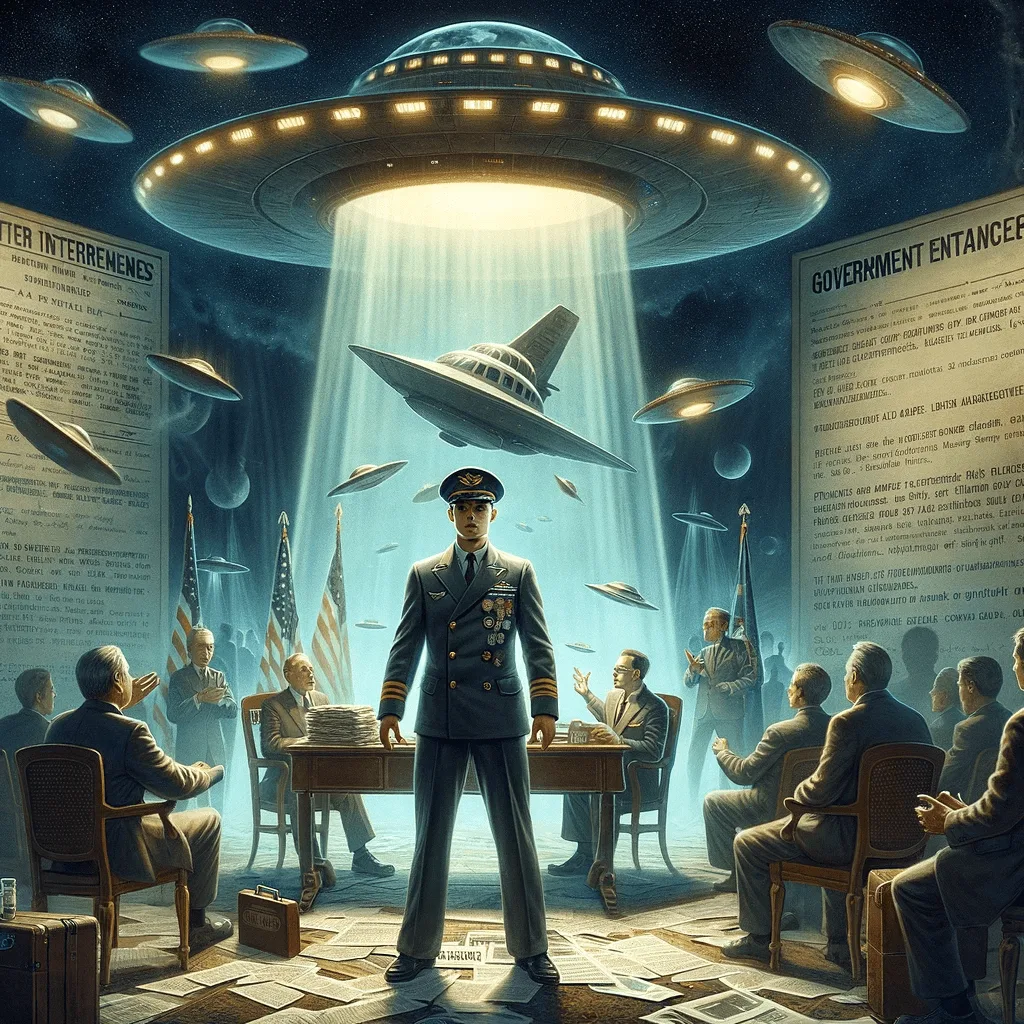Donald E. Keyhoe

Donald E. Keyhoe was a prominent ufologist and author who played a significant role in raising public awareness and interest in UFOs during the 1950s and 1960s. Born in 1897 in Iowa, Keyhoe was a graduate of the United States Naval Academy and served as a Marine Corps naval aviator during World War I and World War II.
Keyhoe’s interest in UFOs began in the late 1940s, after he investigated reports of “ghost rockets” seen over Europe. He went on to write a number of influential books on the subject, including “The Flying Saucers Are Real” (1950) and “Flying Saucers from Outer Space” (1953), which argued that UFOs were likely of extraterrestrial origin and that the United States government was covering up evidence of their existence.
Keyhoe’s books and articles were widely read and helped to fuel public interest and speculation about UFOs. He was a vocal advocate for greater government transparency and disclosure regarding UFO sightings and investigations, and was a critic of what he saw as attempts by government officials to downplay or dismiss the significance of the phenomenon.
One unique fact about Keyhoe is that he was one of the earliest and most prominent figures in the field of ufology. His writings and advocacy helped to establish the field as a legitimate area of scientific and public interest, and his contributions continue to be influential in contemporary discussions of UFOs and related phenomena.
Another unique fact is that Keyhoe was a respected and experienced aviator, which gave him credibility and authority in discussing UFO sightings and reports. He was a frequent commentator and guest on radio and television programs, and was widely regarded as one of the leading experts on UFOs in the United States during the 1950s and 1960s.
A third unique fact is that Keyhoe’s views and theories about UFOs have been the subject of ongoing debate and controversy. While some have praised his contributions to the field of ufology, others have criticized his claims and theories as lacking in scientific rigor and evidence. Nonetheless, his impact on the popular culture and public imagination surrounding UFOs has been significant and enduring.
During his 1958 interview with Mike Wallace, Major Donald Keyhoe detailed several compelling UFO cases, underscoring his call for a scientific and systematic investigation into the phenomenon. Keyhoe mentioned a 1951 incident where a UFO circled a fleet in Korean waters, drawing significant attention. This event involved multiple naval vessels and aircraft attempting to intercept the UFO. Notably, radar lock was achieved on the object, indicating its substantial size and presence. The sighting was corroborated by radar data from 14 naval ships.
Keyhoe also referenced a case involving top missile engineers who, in 1957, observed an elliptically shaped UFO accompanied by two smaller disc-shaped objects flying at an estimated speed of over 5,000 miles per hour. This sighting occurred in broad daylight, under clear conditions, over California, and was reported by highly qualified and credible witnesses.
Another noteworthy aspect discussed by Keyhoe was the Air Force’s response to UFO sightings. He pointed out instances where Air Force pilots engaged in pursuits of these unidentified objects, sometimes leading to fatal outcomes, such as the death of Captain Mantell in 1948 and the disappearance of two pilots over Lake Superior in 1953. These incidents, Keyhoe argued, demonstrated the seriousness of the UFO phenomenon and contradicted claims that these were mere illusions or misidentifications.
Keyhoe’s emphasis on these cases highlighted the need for more openness and rigorous investigation into UFO sightings. His advocacy for transparency was rooted in the belief that the public deserved to be informed about these occurrences, which involved not only sightings by ordinary citizens but also by trained military personnel and aviation experts.

